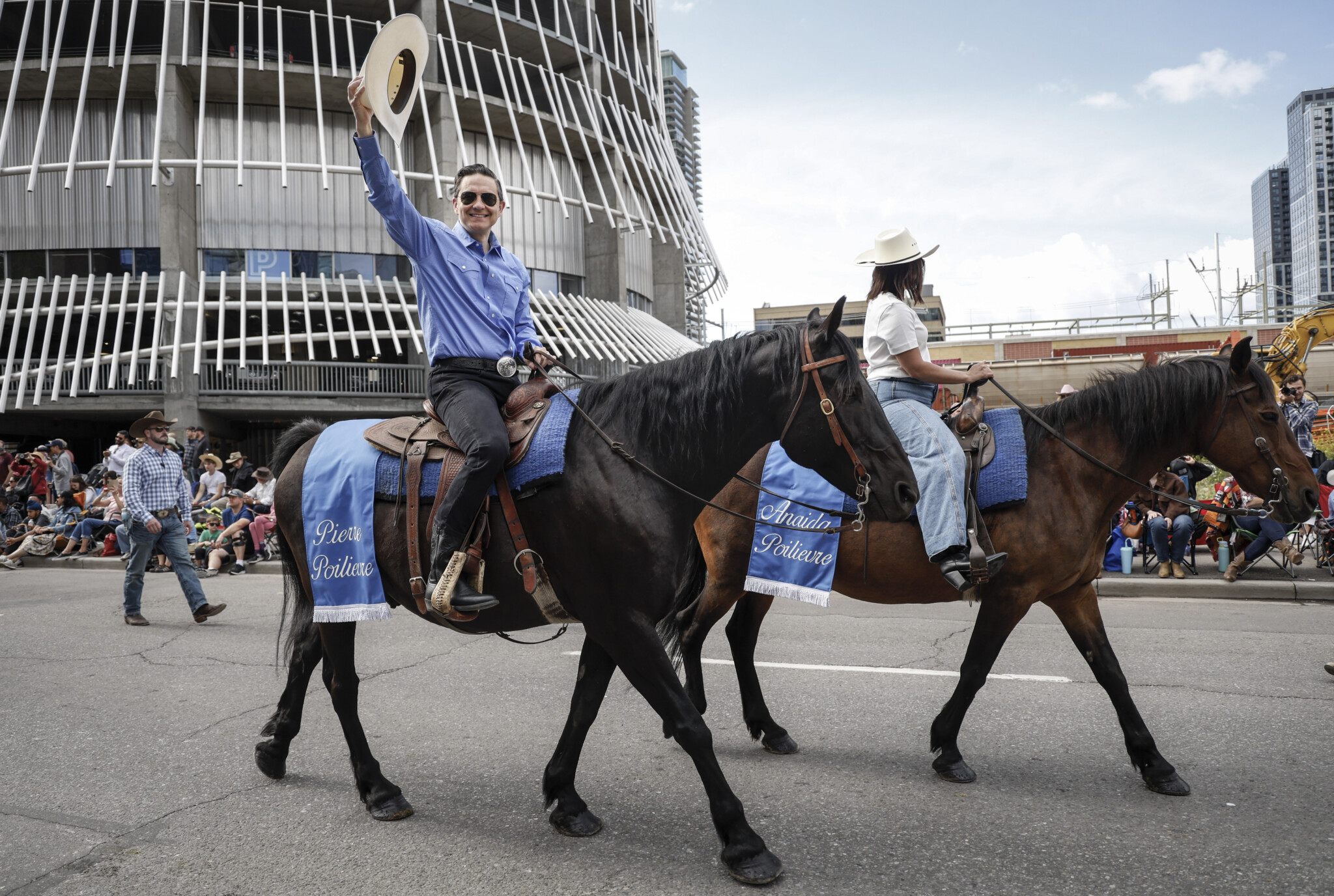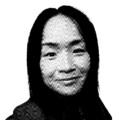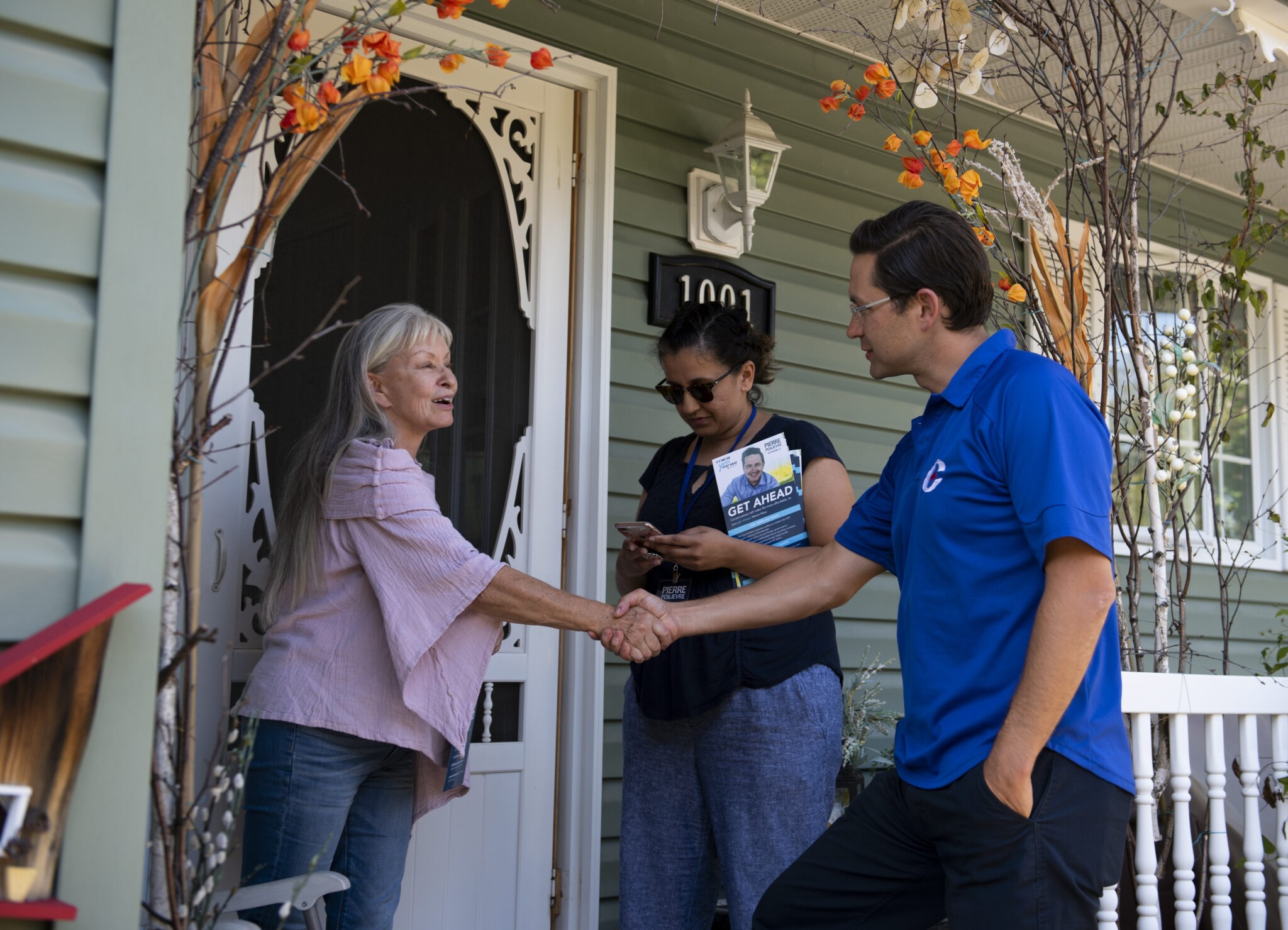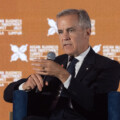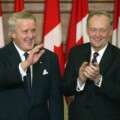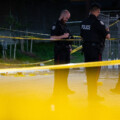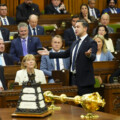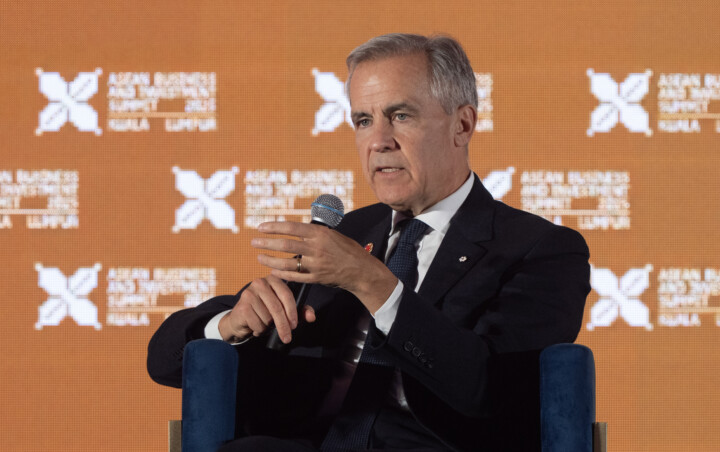As Pierre Poilievre launches his byelection campaign to re-enter Parliament, he’s swapping Ottawa’s suburbs for Alberta’s vast prairie heartland—home to grain farmers, cattle ranchers, and oil-service crews, spread across an area larger than Costa Rica.
Carleton was the riding he had represented since 2004, the place where he built his reputation as a combative, small-government conservative. But when it flipped Liberal in April, Poilievre was suddenly out of a seat—and out of Question Period—where his signature “attack dog” style once thrived.
His path back in now lies in the rural riding of Battle River–Crowfoot, a deeply conservative stretch of Alberta shaped by a long-standing sense of Western alienation.
From the hoodoos of the Badlands to the rolling, undulating uplands, it’s a place as beautiful as it is distinct. But the local challenges are anything but simple.
Winning the riding will be the easy part. The former incumbent member of Parliament who vacated the seat to clear a path for his leader won April’s election with nearly 83 percent of the vote, one of the highest shares in the country. That pattern goes back decades. The dominant conservative parties have routinely secured some of the largest winning margins ever recorded nationally, often leaving rival parties to split the remaining fraction of the vote.
“He will win, but it’ll be interesting to see how the people in the riding feel about their representative, who is really wearing two hats,” said retired political sociologist Trevor Harrison, referring to Poilievre balancing his dual roles as MP and leader of a national party.
A region set apart
Monte Solberg, the former Conservative MP and cabinet minister who grew up in—and still owns a home in—Drumheller, the picturesque dinosaur town on the western edge of Battle River–Crowfoot, knows first-hand the challenges of representing such a large area with deep socioeconomic anxieties vastly different from the concerns of central Canada.
“Eastern Alberta is one part of Alberta that’s losing population. It is older,” said Solberg, who represented the neighbouring, southeastern Alberta riding of Medicine Hat from 1993 to 2008.
In terms of headcount, the two ridings are comparable, each with more than 100,000 people. But Battle River–Crowfoot is 26 times larger in land mass.
“I’ve been to towns where I went and did a town hall meeting and nobody showed up,” Solberg recalled. “Zero people showed up. But the fact that you went there and made an effort is appreciated.”
Polievre’s old riding of Carleton is sprawling in its own right with rural elements, but it’s also a fast-growing suburban riding with a median before-tax total household income of $136,000, which is higher than many major metropolitan ridings in Canada. That wealth is buoyed by dual-income households, strong public service employment and a booming tech sector in the capital region.
In contrast, the median before-tax total household income in Battle River–Crowfoot is 40 percent lower at $80,000, according to Statistics Canada’s 2021 census profile.
“I think it explains actually a lot about the anxiety that you see in Alberta voters both federally and provincially, who are fearful for the future,” said Harrison, who lives in Lethbridge.
According to census data, unemployment in Poilievre’s aspiring riding sits near 10 percent, with residents relying more heavily on entitlements once they receive them, likely driven by farm support, seniors’ benefits, and employment insurance in lower-wage areas with seasonal work.
“What is the future for them and maybe more importantly, the future for their children?” Harrison said about the local anxieties.
“They see young people are going to leave for the cities. They leave for maybe other provinces for opportunities. That creates a kind of political dynamic that people living in Ottawa have a hard time getting their head around.”
Solberg echoed the sentiment.
“It really is about ensuring that you can pass on the family ranch to the kids and the grandkids, and with the family farm, it’s the same thing,” Solberg said.
Despite Alberta’s overall population boom, Battle River–Crowfoot—which stretches from east of Edmonton past Wainwright to the Saskatchewan border, then south toward Medicine Hat—saw its population drop between the last two census periods.
Carleton has a younger, more diverse population, where around one in four people is a visible minority. In contrast, Battle River–Crowfoot has an aging population where German is the second most common language.
“There’s an old German heritage there, and probably more than a few Hutterite colonies where they continue to speak German,” Solberg explained. “But it’s really the values that are very different. It’s very traditional in Alberta—with a libertarian streak. I’d say there’s more of a pragmatic streak in Pierre’s old riding.”
That political difference is also rooted in the region’s dominant industries.
“It is very much kind of a working-class, farming, ranching [region]…probably a number of people who work in supplies to the oil and gas industry and the service industries,” Harrison observed.
“So much more kind of blue-collar, middle class versus what is Carleton,” he said.
Talking rain, not just pipelines
On a recent trip to Alberta, Poilievre posted a video of his drive through Hardisty, a town in the byelection riding of around 600 people, that he stressed moves $90 billion in energy a year.
“Hardisty is the kind of place you might not even notice as you drove by, not realizing that you passed one of the most powerful energy junctions on the continent,” Poilievre told the camera.
“It helps pay the nation’s bills and powers the lives of millions of people. Every single day, 4.1 million barrels of oil flow out of the tank farm in this tiny town.”
As the start and end point for multiple major pipelines, including Alberta Clipper, Hardisty represents the artery of wealth for many in the riding, Solberg said.
“I’ve been up to Hardisty, I’ve seen it,” he said. “The Canadian energy industry, on the one hand is headquartered in Calgary, but the other big headquarters is Hardisty, Alberta, where no one has ever been to, unless you’re part of the oil patch and you go up there to see the big oil tanks.”
Still, with most of the corporate energy jobs found in Calgary and oilsands and service jobs found in Northern Alberta and the Edmonton region, economic concerns in Battle River–Crowfoot remain focused on trade, farm viability, and rural sustainability.
In some ways, Solberg said, large parts of the riding are more like Saskatchewan—“joined at the hip” when it comes to issues around canola and tariffs.
“This is shortgrass prairie, ranch country. That informs a very different kind of person than you’d find in the city,” said Solberg. “People are a lot closer to the land, have an appreciation for the weather, for the natural systems.”
That rural worldview means Poilievre will have to become fluent not just in energy policy, but in farm economics and farm lingo.
“One of the things you encounter when you go to a coffee shop in Battle River is everyone getting together in the spring, asking each other how much rain they got last night. It’s ‘I got a tenth,’ ‘I got two tenths,’ ‘I got nothing,’ ‘I got a quarter,’” Solberg said.
“They talk about the price of inputs, how much fertilizer costs, how much herbicides cost, how much pesticides cost, how much it costs to move hay or buy hay.”
That attachment to agriculture may explain why former MP Damien Kurek—who’d held the riding since 2019—used one of his final legislative acts to introduce a bill to recognize a national livestock brand as a symbol of Canada.
National figure facing local challenge
In Carleton, the balance between the local MP and national party leader was easier for Poilievre to maintain. Though not downtown Ottawa, his riding is close enough that he could reach Stornoway or Parliament Hill without ever leaving the capital region.
But soon, that distance could be real—both geographically and symbolically—as Poilievre shifts from the capital’s outskirts to a region that often sees Ottawa as out of touch.
Harrison warns that the performative aspects of modern politics—repeating stump speeches, chasing soundbites—may not land the same way in remote town halls.
“We know that Pierre Poilievre is an extremely hardworking politician. He’s like the Energizer Bunny,” said Harrison. “But there’s a difference between going all over the place and giving the same old stump speech everywhere and going into ridings and actually listening to the people, what they have to say.”
Solberg agrees that listening is key.
“Those cattle ranchers and farm families are the bedrock of the Conservative Party,” he said. “So, he will have an acquaintance with some of these issues, certainly with the kinds of people that he’ll meet, you know—straight shooters who don’t mince words, but good, generous people. So, he’ll know that already. But when it comes to the nitty-gritty of the issues, he’ll have to educate himself.”
Some skepticism is already surfacing, especially among those who are sympathetic to the Alberta separatist movement.
Controversial lawyer Jeffrey Rath, co-founder of the separatist Alberta Prosperity Project, dismissed Poilievre as an outsider in a recent CBC Radio interview.
“There’s a lot of us who question whether he’s even Albertan, whether he should be running in this province,” Rath said.
“Do we really care whether Pierre Poilievre wins in Alberta or not? As far as we’re concerned we’re hoping this is the last federal election ever to be held in the province of Alberta. Let’s not forget Pierre Poilievre reminds all of us everyday of everything that’s wrong with Confederation—and that’s specifically he claims to be from Alberta, but ran the last election on the basis that he was not going to touch transfer payments and was going to continue to suck $40 billion a year out of Alberta for the rest of the country.”
That pressure could force Poilievre into an awkward corner when as leader of a national party, he must take an unambiguous stance on Alberta separatism. He has said in the past he was against the idea, but that he understood the anger and frustration behind the sentiment.
Harrison said that kind of “mealy-mouth” answer likely won’t be enough to satisfy all local constituents.
“You can’t sit on the fence in the middle of something if there’s actually a referendum called,” he said.
Accusations of parachuting into a riding are coming from both the left and the right, with progressives showing schadenfreude over his loss in Carleton and far-right voices questioning his Alberta bona fides.
While Poilievre was born and raised in Calgary, he’s spent most of his adult life in Ontario.
“Who is this person being brought in here?” Harrison said about the types of questions he’ll face. “He has really no connection with our riding and even a somewhat tangential relationship to Alberta itself.”
Still, being a national figure will win him some grace.
“For a number of people in the riding, they may actually feel kind of honoured,” said Harrison. “There is kind of, ‘Oh well, we have the official opposition leader as our representative.’”
The immediate prize, of course, is re-entry into the House of Commons—and a platform to rebuild momentum after a bruising defeat.
“It really can’t be minimized how really damaging that was,” Harrison said of Poilievre’s personal political loss, his first in 21 years. “He has to get back into the House of Commons…That’s job number one.”
While Poilievre’s populist streak may resonate with voters in rural Alberta, it could also limit his broader appeal.
“There’s a certain edge to it that I think played against him,” said Harrison, referencing efforts to soften Poilievre’s image during the last campaign.
But the risks and rewards aren’t confined to the Conservatives. Liberals and other critics of Poilievre risk coming off as elitist if they mock his rural detour.
“I think there’s a danger here for people left of the political spectrum to overplay their hand,” Harrison warned. “There is a sense in many parts of rural Alberta, rural parts elsewhere that there’s a kind of elitism on the left that is looking down on people like this.”
That, he said, can fuel a different kind of identity politics.
“The identity is—I’m a hardworking blue-collar worker. I work for my money. I pay taxes. I don’t feel I get enough for it. I live out here and you city slickers are looking down on me.”
That sentiment could pressure Poilievre to lean harder into populist politics, just as Prime Minister Mark Carney leans into diplomacy, trade, and global summits.
As Carney flies across Europe, talking to NATO allies, negotiating trade agreements, Poilievre has been forced to play a more domestic role, making him appear less “prime ministerial.”
“The advice I would give is—be humble and be prepared to learn about an entirely different part of the world,” Solberg said.
Solberg concluded: “Consider it a privilege.”
The byelection in Battle River–Crowfoot is set for August 18.
